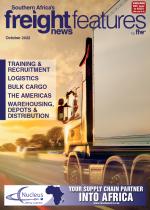South Africa’s logistics sector is in trouble. Speak to analysts and academics and they will tell you they are deeply troubled over the situation unfolding in the country.From dilapidated infrastructure to an overreliance on road transport, non-existent railways and congested ports, the challenges are mounting. And considering the importance of logistics as a driver of the country’s competitiveness, which is fundamental for job creation and economic growth, there is no time to waste in finding solutions.Stellenbosch University logistics expert Professor Jan Havenga says his biggest concern is the lack of stewardship. “The people in charge of master planning are not taking it seriously yet. I hope this changes,” he told Freight News. Havenga says he is concerned about the state of logistics in South Africa. “I have not done the calculation with all the details but we are looking at two things here,” he says. “The first is how much do we overpay for logistics in South Africa? How much more efficient could logistics be? Might be 20%. Inefficiencies are costing the economy in terms of delays and less cost-effective modal choices. This makes us uncompetitive. Secondly, how much does poor logistics infrastructure and policy cost the economy? At least 5-10% of GDP is my guestimate at present.”Professor Rose Luke of the University of Johannesburg’s department of transport and supply chain management shares Havenga’s concerns.“There is simply no comprehensive perspective on the movement of freight in the country at present. The importance of such a perspective cannot be overemphasised. Everything in a country connects – and knowing how the system interacts, where it falls short, what the cost of it is, are all crucial elements to keep track of.”According to Luke, the lack of data in itself is problematic. “What are the new developments and trends, what trends are dropping, what are the quantities, and what do we need from a capacity perspective to keep the country competitive? These are all unknowns.”Havenga explains that cost pressures are now a perfect storm. “Demand is too high,” he states. “For where we are in development logistics, efforts should go towards beneficiation, not the absurd immediate gratification of too many choices raising demand for transport and logistics services.”Furthermore, supply is poorly configured, largely because much more freight should be on the rail, served with intermodal systems. But the railway, for various reasons, is not up to scratch. “It is all compounded by further underlying cost drivers that are too high because of a weak rand, high oil prices, and inf lation. On top of this, the rural road infrastructure for a large portion of the country has collapsed,” he says.“Delivering infrastructure in this environment is near impossible. How does one plan for the future without catching up on the past? Road infrastructure is a crisis and we need to address the lack of rail capacity. We can only assume the cities will grow to require more logistics. The investment requirements are far more than we are estimating. We must move away from white papers to implementation of action plans at ground level if we want to turn the situation around,” says Luke.

